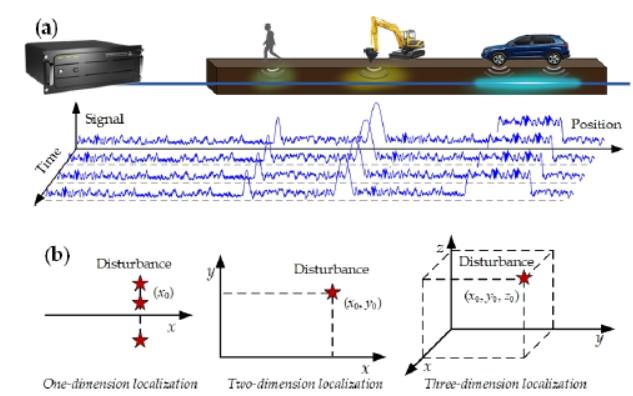Recently, a research team from Shanghai Institute of Optics and Fine Mechanics of the Chinese Academy of Sciences (CAS) reported their research progress on distributed fiber acoustic sensing (DAS) in recent years. The results were published in Sensors 18 November, 2020.
DAS can continuously spatially detect disturbances along with the sensing fiber over a long distance in real-time, based on the backward Rayleigh scattering of laser. DAS has many unique advantages, including large coverage, high spatial-and-temporal resolution, and strong ambient adaptability. It is widely applied in many fields, such as intrusion detection, railway transportation, seismology, structure health monitoring, etc.
The research team reported their research work and results in recent years. Firstly, the sensing principle and some common performance indexes are introduced, and a brief overview of recent DAS researches in Shanghai Institute of Optics and Fine Mechanics (SIOM) is presented. Some representative research advances are explained, including, quantitative demodulation, interference fading suppression, frequency response boost, high spatial resolution, and distributed multi-dimension localization. The engineering applications of DAS, carried out by SIOM and other groups, are summarized and reviewed. Finally, possible future directions are discussed and concluded. It is believed that DAS has great development potential and application prospects.
This work was supported by National Key Research and Development Program of China, National Natural Science Foundation of China, Strategic Priority Research Program of Chinese Academy of Sciences, and Natural Science Foundation of Shanghai.

Figure. (a) DAS applications and signals. (b) Concept of multi-dimension localization. (Image by SIOM)
Article website:
https://doi.org/10.3390/s20226594
Contact:
WU Xiufeng
General Administrative Office
Shanghai Institute of Optics and Fine Mechanics, CAS
Email: xfwu@siom.ac.cn
Web: http://english.siom.cas.cn/